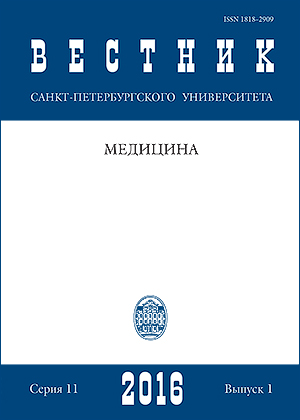REGENERATIVE THERAPY BY TISSUE-PROTECTIVE CYTOKINES AS A COMPONENT OF BACTERIAL CELLULOSE BASED WOUND DRESSINGS
Abstract
In experiments on rats we have conducted a comparative evaluation of eff ectiveness of tissue-protective
cytokines application (erythropoietin, ARA 290) per se and combined with antiseptic agent (dioxydine) as components of wound dressings based on Gluconacetobacter xylinus cellulose using third degree contact thermal injury model and residual thermal injury model. We’ve determined an optimal sorption time of peptide solutions by gel fi lms — 24 hours. We also show that local application of such wound dressings optimises wound process, reduces treatment time of granulating wounds during entire wound process, and mitigates risk of necessity for skin graft ing or at least provides proper preparation of a wound to skin graft ing. Refs 20. Figs 3. Таbles 2.
Keywords:
erythropoietin, ARA 290, bacterial cellulose, Gluconacetobacter xylinus, wound process, thermal injury, wound dressing
Downloads
References
References
Downloads
Published
How to Cite
Issue
Section
License
Articles of "Vestnik of Saint Petersburg University. Medicine" are open access distributed under the terms of the License Agreement with Saint Petersburg State University, which permits to the authors unrestricted distribution and self-archiving free of charge.




